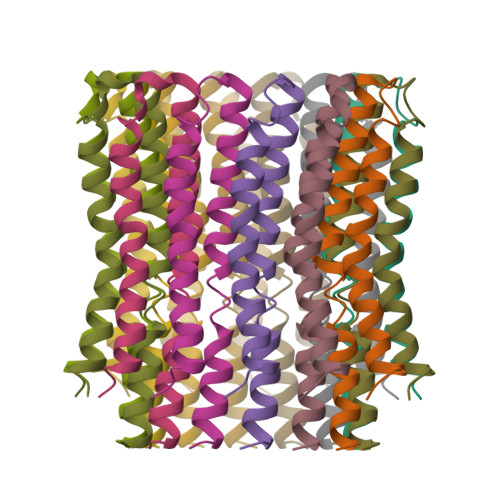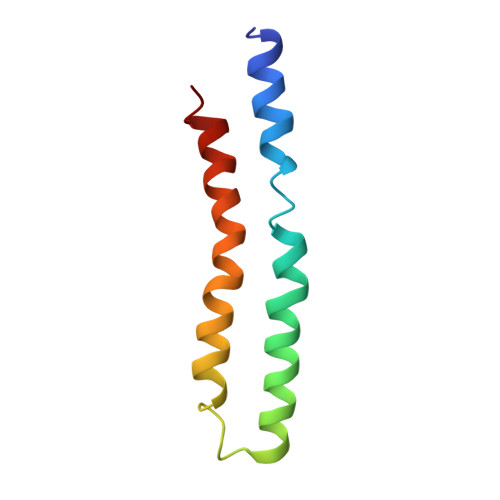Structure of the c14 rotor ring of the proton translocating chloroplast ATP synthase.
Vollmar, M., Schlieper, D., Winn, M., Buchner, C., Groth, G.(2009) J Biological Chem 284: 18228-18235
- PubMed: 19423706
- DOI: https://doi.org/10.1074/jbc.M109.006916
- Primary Citation of Related Structures:
2W5J - PubMed Abstract:
The structure of the membrane integral rotor ring of the proton translocating F(1)F(0) ATP synthase from spinach chloroplasts was determined to 3.8 A resolution by x-ray crystallography. The rotor ring consists of 14 identical protomers that are symmetrically arranged around a central pore. Comparisons with the c(11) rotor ring of the sodium translocating ATPase from Ilyobacter tartaricus show that the conserved carboxylates involved in proton or sodium transport, respectively, are 10.6-10.8 A apart in both c ring rotors. This finding suggests that both ATPases have the same gear distance despite their different stoichiometries. The putative proton-binding site at the conserved carboxylate Glu(61) in the chloroplast ATP synthase differs from the sodium-binding site in Ilyobacter. Residues adjacent to the conserved carboxylate show increased hydrophobicity and reduced hydrogen bonding. The crystal structure reflects the protonated form of the chloroplast c ring rotor. We propose that upon deprotonation, the conformation of Glu(61) is changed to another rotamer and becomes fully exposed to the periphery of the ring. Reprotonation of Glu(61) by a conserved arginine in the adjacent a subunit returns the carboxylate to its initial conformation.
Organizational Affiliation:
Institut für Biochemie der Pflanzen, Heinrich-Heine-Universität Düsseldorf, 40225 Düsseldorf, Germany.
















